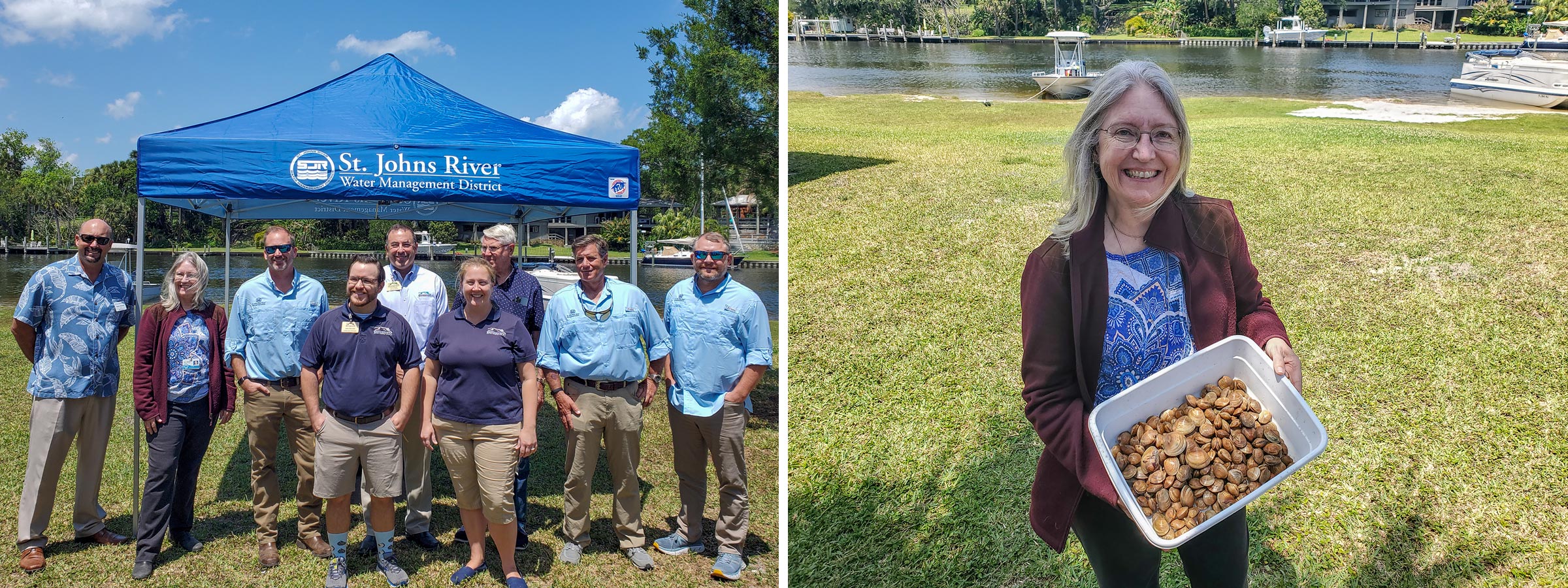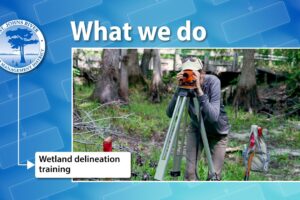Clam project among those to help improve the Indian River Lagoon’s water quality
April 15, 2021
St. Johns River Water Management District Executive Director Dr. Ann Shortelle (right) displays a tub of clams that will be introduced into the Indian River Lagoon to improve clam populations and help improve water quality. Shortelle, District Governing Board members, Brevard Zoo officials and other dignitaries attended the April 12 celebration to kick off this District cost-share project.
Earlier this week, we joined partners Brevard Zoo, Florida Oceanographic Society and the University of Florida’s Whitney Laboratory for Marine Bioscience to kick off an innovative project as another step forward in the revitalization of the Indian River Lagoon.
With funding from the Florida Legislature through the St. Johns River Water Management District, this cost-share project will reintroduce clams throughout the Indian River Lagoon estuary to help improve water quality in this Estuary of National Significance.
The project is designed to establish clam sites at 100 locations in the lagoon, where the bivalves will begin filtering and improving the water quality. Whitney Laboratory for Marine Bioscience, a University of Florida research center in St. Augustine, will provide the nursery-raised hard-shell clams known for surviving brown tide and other algal bloom events. Seed clams will be added to several of the zoo’s existing oyster restoration reefs, as research shows both clams and oysters have greater survival rates when together. Some sites will be planted with aquatic grasses cultivated by Florida Oceanographic Society in Stuart. The project includes long-term monitoring to evaluate and track clam survival rates.
Legislative funding of $1.03 million is bolstering Brevard Zoo’s local match of $90,676 for the clam project. It is among projects made possible by $25 million in lagoon funding provided by Gov. Ron DeSantis and the Florida Legislature.
This is just one example of cost-share projects we are pursuing with many partners to help restore the lagoon. Most of our Indian River Lagoon cost-share projects are “turn dirt” projects, such as muck dredging, the development of stormwater ponds and parks to capture nutrients before they reach the estuary and septic-to-sewer projects. In fact, two years ago, we gathered to celebrate the completion of the Eau Gallie Muck Dredging Project, which resulted in the removal of more than 600,000 cubic yards of gooey black muck. To put that in perspective, that amount of muck would fill 50,000 dump trucks.
The new clam project is also special from the perspective of good, old-fashioned grass-roots volunteerism. Along with the scientists and staff members, many people in the community who love and appreciate this waterway are joining forces to literally lend a helping hand!
The changes in the lagoon occurred over a period of decades and it will take time to turn things around, but we are on the right track. We are united on all fronts — learning institutions, government agencies and local communities — to continue to improve water conditions in this amazing estuary.






